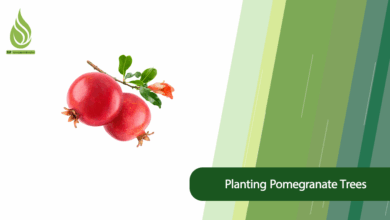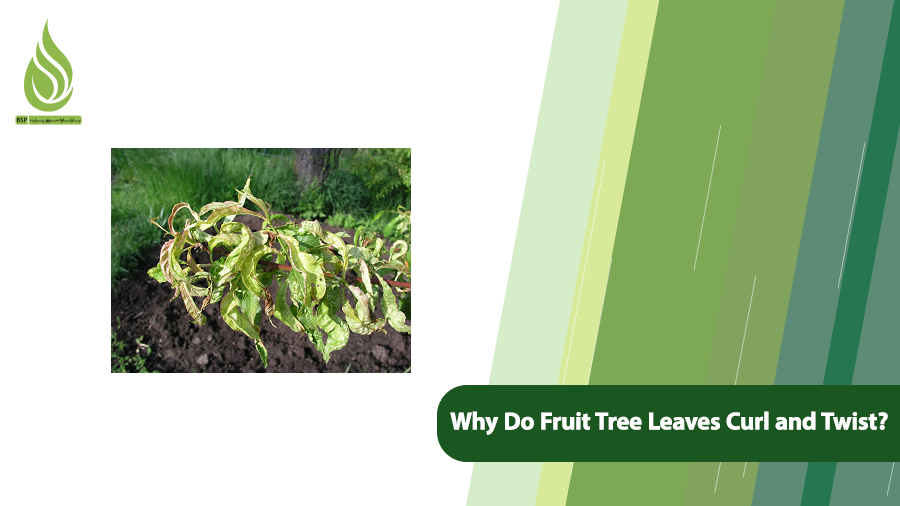
Why Do Fruit Tree Leaves Curl and Twist (Especially Peach and Citrus Trees)?
Leaf curling and twisting in fruit trees is a common issue in orchards and gardens. This problem can affect various trees, but species like peaches, nectarines, plums, oranges, tangerines, and lemons are particularly susceptible. When leaves curl or twist, it’s a sign that the tree is experiencing stress, whether from biological attacks, nutrient deficiencies, or environmental factors. If left unaddressed, this issue can lead to reduced photosynthesis, weakened trees, lower fruit yields, and even branch dieback. In this article, we’ll explore the causes of leaf curling and twisting in fruit trees, along with prevention and treatment strategies. Let’s dive in.
What Causes Leaf Curling and Twisting in Fruit Trees?
Pests
Various pests, such as aphids and mites, can cause leaves to curl and twist. These sap-sucking insects feed on the tree’s leaves, depleting water and disrupting cellular balance in the plant’s tissues. In response, the tree may curl its leaves into a tube-like shape to reduce evaporation and conserve moisture. If you notice ants, aphids, or whiteflies swarming your tree, pests are likely the primary cause of leaf curling.
To address this, first identify the specific pest affecting your tree. Then, use an appropriate pesticide to eliminate them. Chemical controls, insecticidal soaps, neem oil, or introducing natural predators like ladybugs are common methods for managing fruit tree pests. Sticky traps can also help monitor and reduce pest populations.
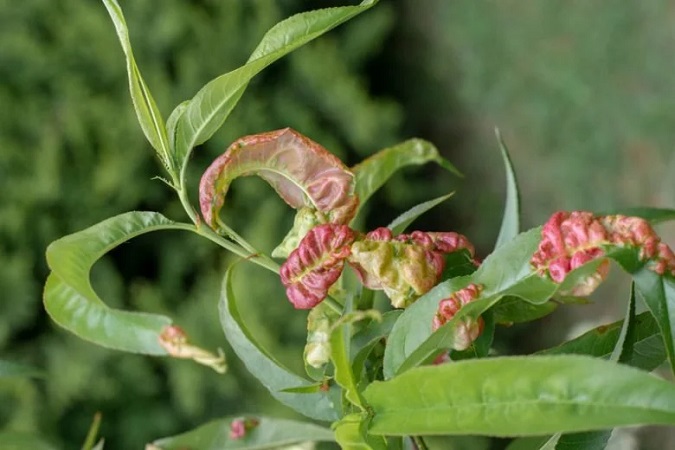
Diseases
Viral diseases, such as fruit mosaic disease, can deform and curl leaves. These diseases are often spread by pests and can quickly spread throughout a garden or orchard. Fungal diseases, like anthracnose or bacterial blast, are particularly common in citrus trees. These issues tend to arise in areas with high humidity or excessive watering. To control these diseases, prune affected branches and apply appropriate fungicides.
Nutritional Deficiencies
A lack of essential nutrients can also lead to leaf curling. For healthy growth, fruit trees require adequate amounts of nitrogen, potassium, magnesium, calcium, and zinc. Deficiencies in these nutrients disrupt the tree’s physiological processes, resulting in curled or twisted leaves.
To prevent nutrient deficiencies, use a balanced combination of chemical and organic fertilizers. Conduct a soil test to determine the precise amount of fertilizer needed for your trees. Nitrogen-based fertilizers are particularly important for promoting healthy leaf and branch growth. Apply them annually at the appropriate time to ensure optimal foliage development.
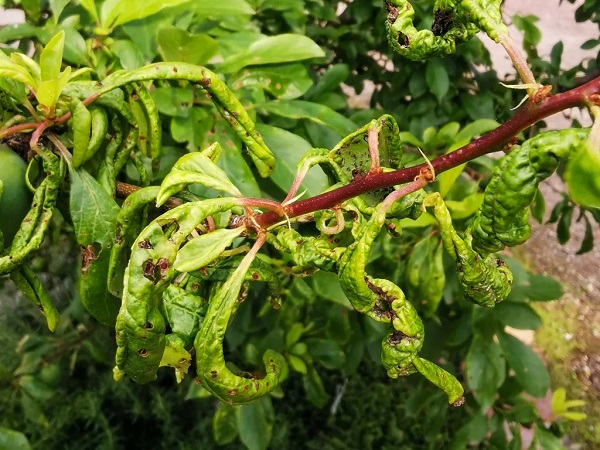
Improper Fertilizer Use
Misusing fertilizers—whether applying them at the wrong time, using too little, or over-fertilizing—is a common fertilization mistake among gardeners and farmers. These errors can negatively impact the health of a tree’s leaves and roots. To avoid this, carefully follow fertilizer instructions and apply the correct amount based on your tree’s needs.
Poor Soil Health
Healthy soil is the foundation of a strong, resilient fruit tree. Trees grown in nutrient-poor, compacted, or poorly structured soil are more prone to issues like leaf curling. Well-balanced soil rich in organic matter helps trees absorb the nutrients they need to combat pests and diseases.
Regularly adding compost, mulch, or organic fertilizers can improve soil structure, retain moisture, and support beneficial microbes that promote tree health.
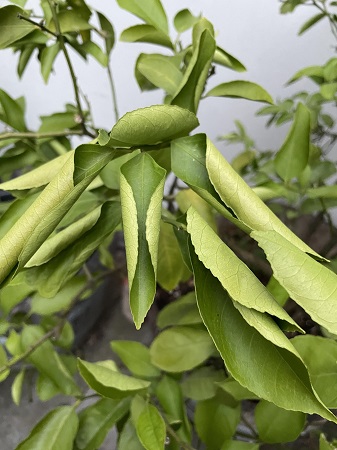
Environmental Stress
Environmental factors can significantly affect the appearance of fruit trees. The most common environmental stressors include:
- Underwatering: If leaves curl inward while remaining green and the soil around the tree is dry, the tree is likely thirsty. Use a moisture meter for a precise diagnosis. The best solution is timely watering. Smart irrigation systems and regular monitoring of your tree’s water needs can help. Applying mulch around the tree’s base can also prevent soil from drying out.
- Overwatering: Excessive watering can also cause leaf curling. Overwatered roots become stressed, leading to abnormal leaf growth. Downward-curling leaves are often a sign of improper watering. If overwatering is the issue, allow the soil to drain fully before watering again. Consult an experienced farmer or agricultural expert to determine the ideal watering schedule for your trees.
- Dry Air: Extremely low humidity can push trees out of their optimal growing conditions. If you’re growing potted fruit trees indoors, monitor and adjust humidity levels. When planting trees in your garden, choose varieties suited to your region’s climate.
- Wind: Strong winds can cause leaves to curl or twist as the tree attempts to protect itself. This is more noticeable in sensitive tree species. In windy regions, consider planting windbreak trees around your orchard to shield fruit trees.
- Heat Stress: During extremely hot weather, leaves may curl to minimize moisture loss through evaporation. Temporary heat stress typically doesn’t harm the tree, but prolonged exposure can cause damage.
- Poor Air Circulation: Insufficient oxygen due to poor air circulation can lead to leaf curling. This often occurs when trees are planted too closely together. To prevent this, space trees appropriately during planting and prune them regularly to maintain good airflow.
Environmental stressors like strong winds, intense sunlight, dry air, or inadequate soil moisture prompt trees to curl their leaves inward to conserve water. While this is a natural response, prolonged stress can cause permanent damage to leaves and branches. Regular watering and mulching are key to preventing these issues.
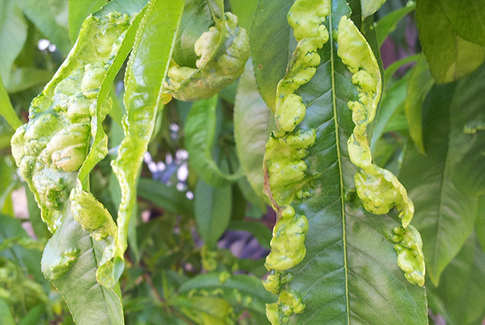
When Should You Not Worry About Leaf Curling?
Not all instances of leaf curling are cause for concern. Sometimes, curled leaves are simply a sign of temporary stress, such as a hot day. To determine if the issue is temporary, check the leaves the following morning. If they appear fresh and healthy again, there’s no need to worry—the tree isn’t under significant water or nutrient stress. However, if the leaves still look curled, discolored, or wilted in the morning, the tree is signaling a more serious problem. Widespread curling, yellowing, or drying leaves indicate a deeper issue that requires immediate attention to prevent long-term damage and protect your fruit yield.
How to Detect Leaf Curling Early
Most tree and plant problems develop gradually. Regular inspections can help you identify issues before they worsen. Before leaves fully curl, they often show early warning signs, including:
- Loss of leaf transparency
- Wrinkling at the leaf edges
- Leaves curling inward or upward
- Discoloration, such as yellowing or browning
If you notice these symptoms on a few leaves, inspect and treat the tree immediately. Using a magnifying glass can help detect tiny pests that may be causing the issue.
Treatment and Prevention Strategies
To prevent and treat leaf curling in fruit trees, consider the following approaches:
- Pest Control: Use approved insecticides to eliminate pests. Sticky traps and natural predators like ladybugs can also help manage pest populations.
- Nutrient Supplementation: Apply foliar sprays containing micronutrients like zinc, magnesium, or potassium to address deficiencies.
- Proper Watering: Ensure trees receive the right amount of water—neither too little nor too much. Use moisture meters or consult experts to establish an appropriate watering schedule.
- Fertilizer Management: Conduct a soil test to determine the correct type and amount of fertilizer. Follow application guidelines carefully to avoid overuse or underuse.
- Mulching: Apply mulch around the tree’s base to retain soil moisture and improve soil health.
- Pruning: Regularly prune branches to remove diseased or damaged growth and improve air circulation.
Conclusion
Leaf curling or twisting in fruit trees is a complex issue with multiple potential causes. Without a thorough investigation, it’s difficult to pinpoint the exact problem or prescribe the right treatment. Examining factors like pests, nutrient levels, weather conditions, and fertilization practices is essential for managing this issue effectively. The sooner you act, the better you can prevent severe damage and protect your fruit harvest.
By addressing pests, ensuring proper nutrition, maintaining optimal watering practices, and improving soil health, you can keep your fruit trees healthy and productive. Regular monitoring and timely interventions are key to preventing leaf curling and ensuring a bountiful harvest.
